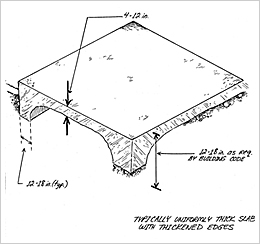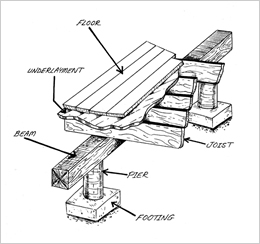Foundation Basics

Slab-on-grade foundation
A home's foundation is in direct contact with the ground and joins the building's structure with the underlying zone of soil or rock. The foundation's job is to transfer the structure's load to the underlying soil or rock, without excessive settlement or movement.
Movement of the soil beneath a home can severely damage the foundation. That’s why the soil beneath your home is often referred to as your second foundation.
Slab-on-grade foundations are shallow foundations that are most often constructed of reinforced concrete. Slab-on-grade foundations can be built quickly and are relatively inexpensive to build. The function of a slab-on-grade foundation is not to resist or limit the amount of heave that might occur beneath a slab foundation, but to move up and down with the shrink and heave. Slab-on-grade houses do not have basements.
Shallow foundations are susceptible to seasonal movement from rainfall, drought, freeze/thaw cycles, and temperature changes and transpiration of moisture thru the roots of large plants and trees.
Pier and beam foundations Pier and beam foundations, as the name suggests, are a concrete footing and pier which supports wood beams and floor joists. These foundations usually have crawl spaces underneath the home.

Pier and beam foundations
Basements are most often constructed in northern climates where freeze/thaw conditions occur and the footing depth must extend beneath the frost line—often four or more feet below the surface. In many of these cases, builders will go ahead and excavate for a basement and build basement walls that provide the support for the house. The bottom of the basement is typically below the depth over which the majority of the soil’s shrink or swell due to climate occurs. Basements can suffer basement floor heave and lateral wall movement, however.
Deep foundations reach depths that are not normally affected by seasonal environmental changes and are considered to be out of the zone of influence.
There are a multitude of other types of both shallow and deep foundations.

